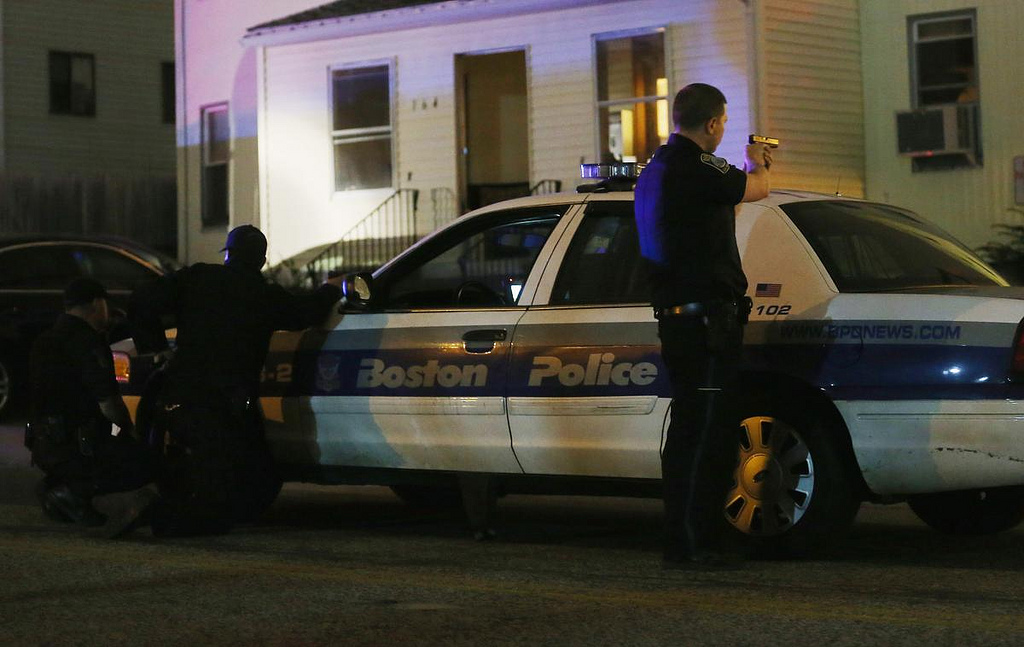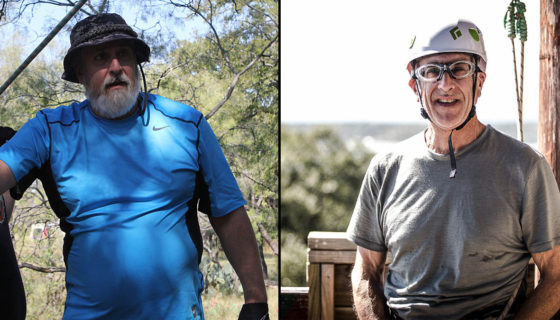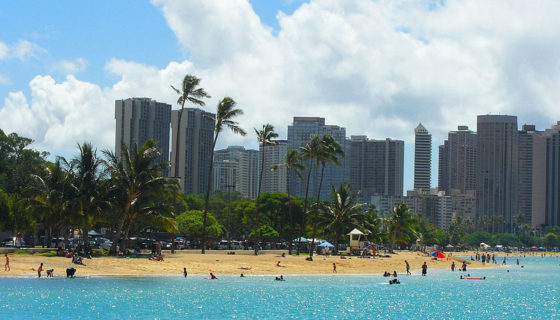5 Important Lessons in Preparedness from the 2012 Dallas / Fort Worth Tornadoes
5 Important Lessons in Preparedness from the 2012 Dallas / Fort Worth Tornadoes
No less than 16 tornadoes ripped through the Dallas/Fort Worth Metroplex on April 3, 2012 damaging hundreds of homes and throwing tractor trailers hundreds of feet into the air like they were toys. While dozens were injured, no fatalities have been reported. I feel extremely fortunate that neither our home or business were affected by the twisters, but having them within just a few miles of both has made me change my thinking of just how prepared I really am.
Whether you live in an area of the country that’s susceptible to tornadoes or not (most are), I hope that the lessons I’ll share in this article will be able to help you solidify your preparedness plans. Let’s face it, no area of the country is immune to natural disasters and while the likelihood of them impacting you personally is low, take a tip from the motto of the Boy Scouts of America and always be prepared.
I have friends that were affected by the tornadoes, but thankfully no more than external damage to their homes in the worst cases. Throughout this article I’ll share a few stories of what they experienced as a way to hammer home a few important lessons to take on board.
Preparedness Lessons Learned
Disasters are everywhere and can be as extreme as 16 tornadoes in one day, or can be as simple as your neighbor’s BBQ getting out of control and spreading to your house. Disaster can strike at any time, anywhere. I’m not trying to sensationalize disasters, just reinstate that they can and do happen. Even with all I’ve learned in my life and since starting ITS, there’s plenty of holes in my preparedness plans. No one will ever be able to be 100% prepared to handle any situation, but sharing things like what I’ve put together in this article and learning from situations like these will put you that much further ahead.
[flickr id=”6919224350″ thumbnail=”medium_640″ overlay=”false” size=”medium” group=”” align=”center”]
1. Water Finds a Way In
[flickr id=”7065303067″ thumbnail=”small” overlay=”false” size=”medium” group=”” align=”right”] I’m guilty of depending on the waterproofness of my roof to keep important items safe. There were hundreds of houses in these recent tornadoes that either lost their roofs, or had so much wind damage that ceilings were collapsing due to water damage. A friend of mine had a major leak due to a 2×4 getting thrown into the side of his attic. While my most sensitive documents are backed up and stored digitally along with important paper records in a safe, that safe is fire rated but not water rated. This means that water can still find its way in.
Keeping those records in a waterproof bag is an option, but as I’d hope most everyone who owns a fire rated safe knows, anything plastic or on media is done for in the event of a safe heating up. Don’t believe me? Research interior temperature in that fire rated safe of yours. Most safes are UL 350 rated, where the interior temperature must stay below 350 degrees, which is below the temperature paper products ignite or char at. An option is a small watertight safe that also provides a UL 125 rating. This rating keeps internal temps below 125 degrees and can’t exceed 80% humidity in order to protect electronic devices.
Most everyone has important paper documents they need to protect and this is just another example of how online storage and backups could help in saving those important documents that can be stored digitally. Think bigger picture too when it comes to water. Having spare clothes and blankets ready to go in a waterproof bag might also be handy to grab in an emergency situation. Don’t forget flooding when you’re thinking about water damage and the potential of water rising rather than falling from above.
2. Leave Everything Behind
In extreme circumstances a home can be completely demolished in the wake of a tornado, causing a family to evacuate before a disaster or being forced to pick up the pieces of what’s left. While I’ve taken some steps to log our belongings and valuables for insurance purposes, there’s still more that I can do. As I’m sure that most everyone reading this knows, insurance will make you prove everything you claim to have in the event of a loss. That’s through theft, fire, acts of god, etc. Having records is extremely important.
[flickr id=”7065304819″ thumbnail=”medium_640″ overlay=”false” size=”medium” group=”” align=”center”]
Kelly gives me a hard time for hoarding receipts and tracking all our purchases, but I can’t tell you how many times going right to the file cabinet and finding that receipt in question has saved us. What I should be doing is taking the important home purchases and scanning them to have digital records of these. I’ve also been neglecting to update a document I have going with date purchased, location purchased, description, photos, serial number and price of our important purchases. What I mean by this is larger priced items. Something to take into consideration as well is to grab a video camera and record the whole house and everything in it. Then take that recording and store it off-site or in a safety deposit box.
I always remember the phrase, “you have to be ready to leave it all behind” What this means to me is that I need to have provisions put in place that are readily accessible and easily piled in a vehicle to leave in a matter of minutes, including my family. I’ll be talking more about this in upcoming articles and share how I’ve been preparing. This goes beyond the scope of this article, but it’s something I take very seriously.
3. Anticipate Utility Failures
This includes electricity, gas, water and everything that these affect. My friend’s neighborhood had houses completely demolished, lost power for hours, had broken gas lines and a broken water main. That’s all the utilities gone and all at once. While a generator can be handy in a situation like this, it’s possible that there’s so much damage that you don’t even want to stick around. I had another friend that called me for help to pick the lock on his front door so he could get into his house, as he was dependent on a garage remote to get inside and had lost his power. The take home from this is to always have a spare key stored outside in a location that’s secure enough to withstand heavy rain and wind.
[flickr id=”6919224468″ thumbnail=”medium_640″ overlay=”false” size=”medium” group=”” align=”center”]
A tool that I always have with me from my volunteer work with my city’s CERT (Community Emergency Response Team) is a shut-off wrench that can turn off a home’s gas and water in disasters like these. Having the ability to turn off utilities is an important aspect of disasters that’s often overlooked. This is a good point to mention food and water too. Particularly water, as your water filtration on the city level more than likely depends on electricity. If supply lines become disrupted during a disaster, water will cease to be potable and you may need to either boil it or provide your own until it can be re-established.
One last note is how disappointed I am with our CERT that I belong to. Not once was there any information put out on how we could help with disaster relief or what was being done to aid in the clean up efforts, I had to seek this information out on my own. I belong to the Fort Worth CERT and after this am going to take the time to join another group that will hopefully respond to a disaster like this, despite it not necessarily being in their zip code.
4. Have a Backup Communication Plan
Along the same lines as utility failures, communications can certainly be disrupted in the event of a natural disaster. Even if they’re still functional they can get overloaded in an emergency when everyone is trying to use them at once. Often text messaging can still function if voice doesn’t, but it’s not guaranteed.
[flickr id=”7065304671″ thumbnail=”medium_640″ overlay=”false” size=”medium” group=”” align=”center”]
We’ve posted here on ITS in the past that the FCC designed FRS (Family Radio Service) for short range communications (1/2 to 3/4 mile) that are unlicensed for use by families and groups. While FRS isn’t going to allow you to communicate across town. It’s perfect for a neighborhood to have a plan and channel to communicate on in the even of a disaster. FRS radios are cheap and easy to keep on hand.
For longer range communications, a CB or HAM Radio could be useful in these type of situations. Check out our primer here on How to Be a Ham: An Introduction to Amateur Radio and Licensing. Citizens Band Radio has an effective range of 1-5 miles and is a very effective emergency communication device. Proper CB slang and lingo is an oxymoron, but a definitely a good thing to know when communicating on a CB radios.
5. Store Emergency Medical Supplies
[flickr id=”6919224132″ thumbnail=”small” overlay=”false” size=”medium” group=”” align=”right”] My friend that lived in the heavily damaged area shown in the photos said that it took EMS just under 2 hours to even be able to get into his neighborhood to check for injuries. There were trees blocking streets and he went to work with his chainsaw and truck to help clear the streets. As we’ve mentioned too many times to count, in an emergency, help isn’t coming. At least not with any consistency or speed. You have to be able to depend on what you have at your disposal.
This isn’t a ploy to promote our ETA Trauma Kits and I won’t even link to them here, this is a plea to have something at your disposal to treat major and even minor injuries. For not only you and your family, but for those around you that might need assistance. Not even the Law Enforcement here locally are issued anything to keep in their vehicles and are also solely dependent on EMS to respond to their critical emergencies.
Just remember that it takes just minutes to bleed out and at the very least you should keep gauze and pressure bandages around to stop the bleeding. The addition of hemostatic agents and keeping a few tourniquets around, will only add to what kind of aid you’re able to render. Don’t skimp on proper medical equipment to keep at home, vehicles and even on your person.
Final Notes
Natural disasters are nothing to take lightly and I hope this article has helped highlight areas you might have neglected in your preparedness as these tornadoes have done to my preparedness plans. One thing should stand out to you with all this and that’s the bottom line of having a plan.
A few things I always keep in my head from diving are the phrases “dirt dive” and “plan your dive and dive your plan.” These mean to not only have that plan, but run through it before you truly need to implement it. This will help expose holes before the actual disaster does. Stay safe and remember that being prepared doesn’t always mean preparing for the zombie apocalypse.
[flickrset id=”72157629422637528″ thumbnail=”thumbnail” photos=”” overlay=”true” size=”large”]











Discussion